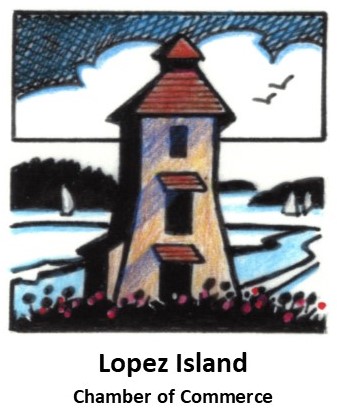Underrated Wildlife Of The Salish Sea
While the San Juans are well known for being home to orcas, there are lots of other fun wildlife species you may not have heard of before, all with their own fascinating quirks
Whether you’re an aspiring biologist or just someone who enjoys looking for wildlife, the San Juan Islands have plenty of checkmarks for the bucket list!

Of the smaller cetacean species in these waters, Dall’s porpoises tend to be the most gregarious swimmers and can be relied upon for splashy maneuvers. Bigger and bolder than their cousins the harbor porpoises, their distinctive black-and-white coloring sometimes leads onlookers to confuse them with their larger Salish Sea cousins – orcas.
- This largest member of the porpoise family was named after William H. Dall, who was the first to identify the species.
- Biologists and naturalists can identify a pod of Dall's porpoises by the characteristic 'rooster’s tail' splash created when the porpoises swim at high speeds.
- Dall’s are among the fastest swimmers in the cetacean family, clocking up to 34 miles an hour, and often like to ride the bow waves of boats.
Minke (pronounced [ming-kee]) whales are the Hobbits of the Salish Sea – smaller than the hulking humpbacks and shyer than the active orcas – but no less impressive in their own right. Minkes have been studied in this area since 1980, one of the most extended studies of a baleen whale species.
- One individual, named Nick Jagger due to a nick in its dorsal fin, has often been observed off Lime Kiln Point State Park but most minkes will be found on Salmon or Hein Bank these days, so be on the lookout at South Beach.
- Minkes are the second smallest baleen whale in the world, only reaching ~24-25 feet here. Their surfacing patterns are subtle; for example, they never lift their tail out of the water when diving (‘Fluke’) as gray or humpback whales do.
- They can be a bit smelly (i.e. “stinky minkes”); if you are on the water and there is a strange odor something akin to overcooked rotten broccoli, then that is a sure sign that there is a minke whale close by.


Whether the ‘lion’ part of the name originates from the mane-like fur around the neck or their grumbly growls, there’s no doubt that Steller sea lions have earned the title of king of the pinnipeds in the Salish Sea. Besides humans, they have only one other known predator – Bigg’s orcas.
- Steller sea lions are named after George Wilhelm Steller who was a German naturalist that studied and observed their behavior.
- Stones are commonly found in Steller sea lions’ stomachs from pebbles to rocks up to 12 cm in diameter! It is speculated that they might help grind up fish, or act as a ballast when diving, or might help ward off hunger pangs when the animals are fasting on shore.
- Stellers are the largest species of sea lion and the fourth largest pinniped in the world
This bird of prey is also known as the river hawk, fish hawk or seahawk. But don’t mix it up with the Seahawk, the mascot of the Seattle-based football team. The team uses an augur hawk as its mascot, a species native to Africa. A nesting pair of osprey can sometimes be spotted through a telescope set up by the visitors’ center at English Camp.
- The osprey is the only hawk species in North America that almost exclusively eats live fish, with around 80 fish species making up about 99 percent of its diet. Osprey can dive as deep as three feet searching for fish, but prefers to hunt in shallower areas.
- Ospreys mate for life. Their first nest is small, but they add to it every year. After a few years, the nest can be big enough for a human to sit in comfortably.
- While flying away with freshly-caught prey, an osprey will manipulate the fish so that it is parallel to the bird's body, thus decreasing wind resistance.


The animal kingdom doesn’t get much cuter than an otter, and the North American river otter is no exception. The thick fur and cheerful face may put you in mind of an aquatic teddy bear, but they are skilled hunters with teeth that can easily crush shell and bone.
- River otters can stay underwater for up to 8 minutes and can close their ears and nostrils to keep water out. They can also dive to a depth of 60 feet!
- When threatened or frightened, they emit a hair-raising scream that can be heard up to 1.5 miles (2.4 kilometers) across the water.
- The name “river otter” is somewhat misleading. These creatures live in a wide range of fresh and saltwater habitats, such as rivers, lakes, marshes, estuaries, inland wetlands, and coastal shorelines.
- The largest member of the weasel family, otters always wash themselves after every meal.











